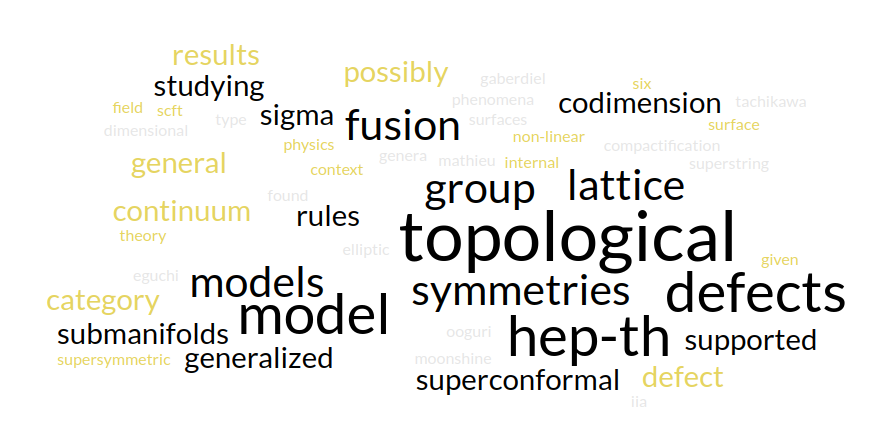Centro de Excelencia Severo Ochoa
Menu
Search

IFT Seminar Room/Red Room
Stefano Giaccari from Padova will give a (remote) talk based on his recent paper "Topological defects in K3 sigma models" (arXiV: 2402.08719, with R. Angius and R. Volpato).
"In the context of physics, given a K3 surface, a supersymmetric non-linear K3 sigma model is the internal superconformal field theory (SCFT) in a six dimensional compactification of type IIA superstring on R^{1,5} X K3. Studying these models, Eguchi, Ooguri and Tachikawa in [arXiv:1004.0956 [hep-th]] found Mathieu moonshine phenomena for the elliptic genera of K3 surfaces. In [arXiv:1106.4315 [hep-th]], Gaberdiel, Hohenegger and Volpato studied symmetries of K3 sigma models, by comparing the isometry group of the Mukai lattice (which is physically interpreted as the D-brane charge lattice) with the Conway group Co_0, the group of automorphisms of the Leech lattice. Recently, symmetries have been reinterpreted in terms of topological operators supported on codimension 1 submanifolds with group-like and invertible fusion rules. This has naturally led to the notion of generalized symmetries as categories of topological defects supported on arbitrary codimension submanifolds with possibly non-invertible fusion rules.
In [arXiv:2402.08719 [hep-th]] we apply the same strategy as in [arXiv:1106.4315 [hep-th]] to derive a number of general results for the category of the topological defect lines preserving N=(4,4) superconformal algebra and spectral flow, studying their fusion with boundary states. We argue that while for certain K3 models infinitely many simple defects, and even a continuum, can occur, at generic points in the moduli space the category is actually trivial, i.e. it is generated by the identity defect. Furthermore, we show that if a K3 model is at the attractor point for some BPS configuration of D-branes, then all topological defects have integral quantum dimension. We also conjecture that a continuum of topological defects arises if and only if the K3 model is a (possibly generalized) orbifold of a torus model. These general results are confirmed by the analysis of a couple of significant examples."
Social media